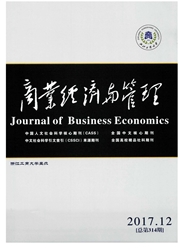

 中文摘要:
中文摘要:
作为现代旅游经济的核心内容,旅游发展经济增长溢出是旅游学研究领域的逻辑起点。文章采用以门槛回归为代表的非线性计量经济学理论,利用中国1999-2009年省际面板数据,以基础设施作为门槛变量,通过构建面板门槛回归模型,对中国旅游发展经济增长溢出的非线性特征予以实证检验。研究发现,在控制其他变量的基础上,中国旅游发展经济增长溢出显著地存在基于基础设施的正向非单调性"双门槛效应"。在全国层面上,随着基础设施建设,旅游发展经济增长溢出效应呈"V"形;就不同基础设施水平区制而言,基础设施欠发达区制子样本内旅游发展经济增长溢出效应分别显著小于中等和发达区制内子样本。
 英文摘要:
英文摘要:
As a core content of modern tourism economy,economic growth spillovers of tourism development is a logical start of tourism studies.Through the threshold regression of panel data about the nonlinear econometric theory,this paper makes an empirical test about economic growth spillovers of tourism development in China based on inter-provincial panel data from 1999 to 2009 by constructing a panel threshold regression model,with infrastructure as the threshold variable.The results show that,with other variables under control,economic growth spillovers of tourism development has a significantly positive and non-monotonic "dual threshold effect" based on the infrastructure.At the national level,with the construction of infrastructure,economic growth spillovers effect of tourism development shows a "V" shape.Regarding different levels of infrastructure,economic growth spillovers effect of tourism development within a sub-sample on a less developed level is significantly less than the medium and the developed level sub-sample respectively.
 同期刊论文项目
同期刊论文项目
 同项目期刊论文
同项目期刊论文
 期刊信息
期刊信息
